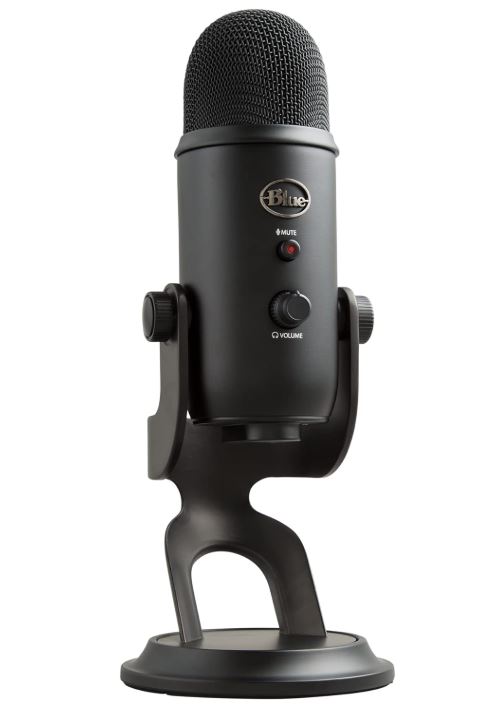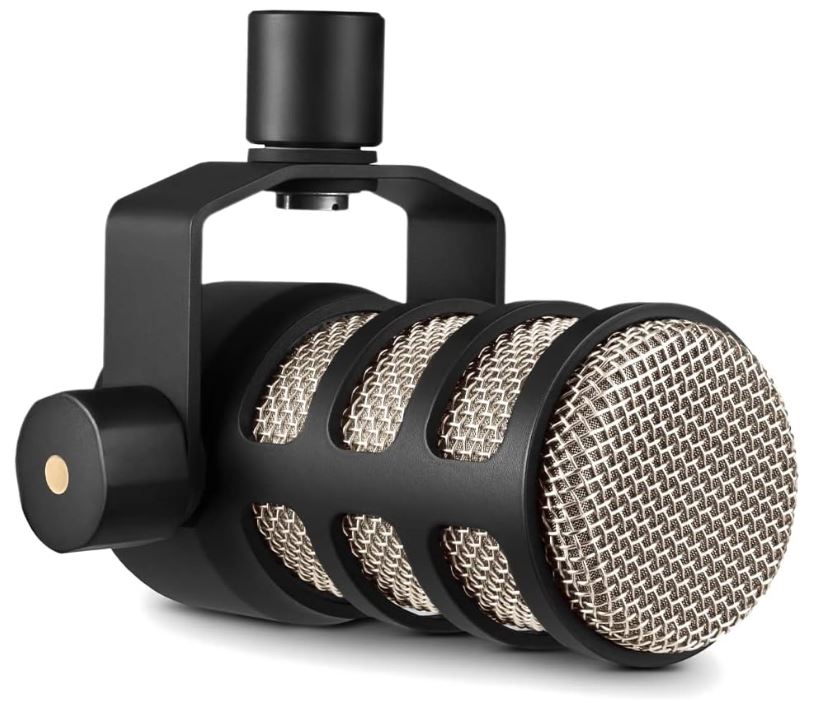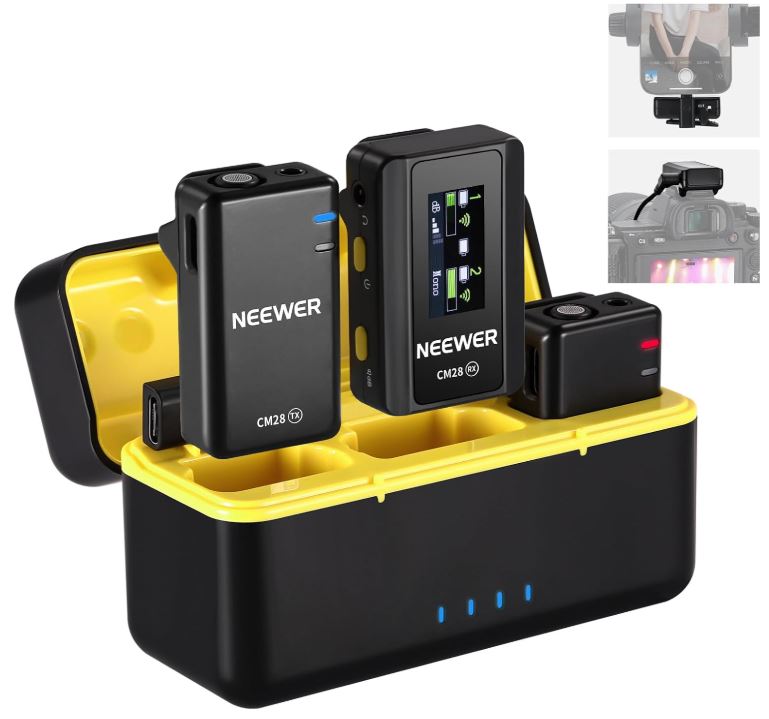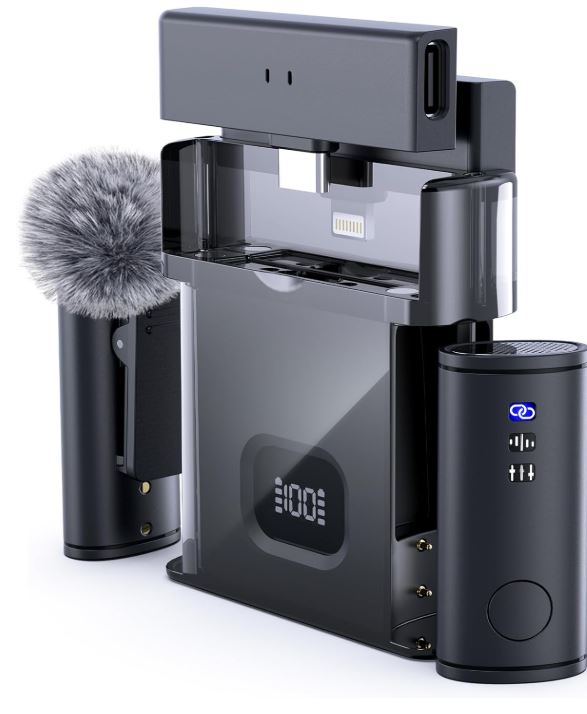Looking to elevate your karaoke experience with a wireless microphone? Discover the best options and tips for an unforgettable night!
Summary Table of Key Facts
| Feature | Details |
|---|---|
| Type | Wireless Microphones |
| Connectivity | Bluetooth, UHF, VHF |
| Battery Life | 4 to 20 hours |
| Weight | Varies from 0.5 to 2 lbs |
| Price Range | $20 to $500 |
Outline of Relevant Subtopics
- Understanding Wireless Microphones
- Benefits of Using Wireless Microphones for Karaoke
- Types of Wireless Microphones
- How to Choose the Right Wireless Microphone
- Top Wireless Microphones for Karaoke
- Setting Up Your Wireless Microphone
- Common Issues and Troubleshooting
- Maintaining Your Wireless Microphone
- Comparing UHF vs. VHF Wireless Microphones
- Wireless Microphone Accessories
- Best Practices for Karaoke Nights
- How to Improve Your Singing Skills
- Creating a Karaoke Playlist
- Hosting the Perfect Karaoke Party
- User Reviews and Experiences
- Expert Opinions on Wireless Microphones
- Future Trends in Karaoke Technology
- Legal Considerations for Karaoke Licenses
- How to Market Your Karaoke Events
- Resources and Communities for Karaoke Enthusiasts
Understanding Wireless Microphones
A wireless microphone is an essential tool for karaoke enthusiasts, allowing singers to move freely without being tethered to a sound system. Unlike traditional wired microphones, wireless models use radio frequency signals to transmit sound to a receiver connected to the audio system. This innovation not only enhances mobility but also enriches the overall experience, making it more enjoyable.
Our Top Picks - Best USB Microphones 🎙️
Looking for the perfect microphone? Check out our top-rated USB microphones for crystal-clear sound & studio-quality performance! 🎧✨
The technology behind wireless microphones has evolved significantly over the past few decades. Initially, these devices suffered from interference and poor audio quality. However, advancements in digital signal processing have led to improved clarity and reliability. Today, you can find models that offer exceptional sound quality, long battery life, and robust connectivity options.
As you dive into the world of wireless microphones, it’s crucial to understand the different types available, their functionalities, and how they can impact your karaoke experience. Whether you’re a casual singer or a seasoned performer, the right microphone can make all the difference in delivering a stellar performance.
Benefits of Using Wireless Microphones for Karaoke
One of the most significant advantages of wireless microphones is the freedom of movement they provide. Imagine belting out your favorite tunes while dancing around the room, engaging your audience, and creating a lively atmosphere. This experience is hard to replicate with a wired microphone, which can restrict your movements and limit your interactions with guests.
Another benefit is the ease of setup. Wireless microphones typically come with a receiver that connects easily to your karaoke system, eliminating the hassle of untangling cords or finding the right length for your space. This convenience allows you to focus on enjoying the moment rather than troubleshooting technical issues.
Our Top Picks - Best Wireless Microphones 🎤
Looking for a wireless solution? Check out our top-rated wireless microphones for hassle-free, high-quality sound! 🎶✨
Additionally, wireless microphones often come equipped with advanced features like noise cancellation, adjustable gain control, and built-in effects. These enhancements can significantly elevate your sound quality, ensuring that your voice is heard clearly and beautifully, regardless of the venue.
Types of Wireless Microphones
Wireless microphones can be categorized into several types, each designed for specific uses and environments. The most common types include handheld, lavalier, and headset microphones. Handheld microphones are the most popular for karaoke due to their versatility and ease of use. They are perfect for singers who want to hold the microphone while performing.
Lavalier microphones, often referred to as lapel mics, are small and can be clipped onto clothing, making them ideal for presentations or interviews. While they are less common for karaoke, they can be useful in certain scenarios where the performer needs their hands free.
Headset microphones combine the features of both handheld and lavalier mics, providing a secure fit while leaving the singer’s hands free. These are particularly popular among performers who engage in dynamic movements or need to interact with the audience.
How to Choose the Right Wireless Microphone
Choosing the right wireless microphone for karaoke involves considering several factors, including sound quality, range, battery life, and budget. Sound quality is paramount; look for microphones that offer clear audio with minimal distortion. Test the microphone if possible and read reviews to gauge the experiences of other users.
Range is another critical factor. Most wireless microphones operate within a specific frequency range, typically from 100 to 300 feet. If you’re hosting karaoke in a larger venue, ensure that the microphone you choose can cover the required distance without losing signal quality.
Battery life can vary significantly between models. Some microphones offer rechargeable batteries that can last up to 20 hours, while others may require frequent battery changes. Assess how often you’ll be using the microphone and choose one that fits your needs to avoid interruptions during your karaoke sessions.
Top Wireless Microphones for Karaoke
When it comes to selecting a wireless microphone for karaoke, several models stand out in terms of performance, reliability, and positive user feedback. One highly recommended option is the Shure BLX288/PG58, known for its exceptional sound quality and robust construction. This microphone is perfect for both beginners and professional singers.
Another great choice is the Sennheiser XSW 2-ME2, which offers a compact design and excellent audio clarity. Its user-friendly features make it suitable for karaoke enthusiasts who prioritize simplicity and efficiency.
For budget-conscious users, the Fifine K031B Wireless Microphone provides impressive performance at an affordable price. While it may not have all the bells and whistles of higher-end models, it offers great sound and solid reliability, making it a popular choice for casual karaoke gatherings.
Setting Up Your Wireless Microphone
Setting up your wireless microphone involves several straightforward steps. Begin by connecting the receiver to your karaoke system or mixer. Ensure that the receiver is positioned in a location that minimizes obstacles, as physical barriers can interfere with the signal. Next, power on both the microphone and receiver, and adjust the volume levels to your preference.
It’s important to select a clear frequency channel to avoid interference from other wireless devices. Most modern microphones feature automatic frequency selection, simplifying this process. Once you’ve found a suitable channel, perform a sound check to confirm that the audio levels are balanced and clear.
Finally, familiarize yourself with the microphone’s controls, such as mute buttons and gain adjustments, to ensure you can manage your sound effectively during your performance. A well-set-up microphone can make your karaoke experience seamless and enjoyable.
Common Issues and Troubleshooting
Despite their convenience, wireless microphones can experience occasional issues that may disrupt your karaoke night. One common problem is signal interference, often caused by other electronic devices operating on similar frequencies. If you notice audio dropouts or static, try changing the frequency channel on your microphone or moving closer to the receiver.
Another issue is battery failure. Always check your battery levels before starting your karaoke session, and keep spare batteries on hand for longer events. If your microphone suddenly stops working, this is often the culprit.
Lastly, ensure that your microphone and receiver are properly synced. If you experience connectivity problems, consult the user manual for instructions on re-pairing your devices. Regular maintenance and checks can help prevent these issues from arising during your performances.
Maintaining Your Wireless Microphone
Proper maintenance of your wireless microphone is essential to ensure longevity and optimal performance. Start by regularly cleaning the microphone grille with a soft cloth to prevent buildup of dirt and debris that can affect sound quality. Avoid using harsh chemicals; a gentle soap solution is usually sufficient.
Store your microphone in a protective case when not in use to shield it from physical damage and dust. Additionally, be mindful of temperature and humidity levels, as extreme conditions can affect the electronics and battery life.
Finally, periodically check for software updates if your microphone has digital features. Manufacturers often release updates to improve performance and fix bugs, ensuring that your microphone remains in top condition.
Comparing UHF vs. VHF Wireless Microphones
When shopping for wireless microphones, you may encounter two primary types: UHF (Ultra High Frequency) and VHF (Very High Frequency). UHF microphones operate at higher frequencies, typically between 470 to 700 MHz, which allows for a wider range and better sound quality. They are less susceptible to interference and are ideal for larger venues.
On the other hand, VHF microphones operate between 30 to 300 MHz. While they are generally cheaper and easier to use, they may suffer from interference and have a shorter range compared to UHF models. VHF microphones are suitable for smaller gatherings or home use, where high fidelity and range may not be as critical.
Ultimately, the choice between UHF and VHF will depend on your specific needs, budget, and the environment in which you plan to use the microphone. If you prioritize sound quality and range, UHF is the better option.
Wireless Microphone Accessories
To enhance your wireless microphone experience, consider investing in some essential accessories. A pop filter can significantly improve sound quality by reducing plosive sounds, while a windscreen can help minimize wind noise during outdoor performances. Both accessories are relatively inexpensive and can make a big difference in audio clarity.
A microphone stand is another useful accessory that allows you to free your hands for more dynamic performances. Look for adjustable stands that can accommodate different heights and angles. Additionally, a carrying case is essential for protecting your microphone during transport and storage.
Finally, consider investing in a wireless microphone charger if your model supports rechargeable batteries. This convenience will ensure that your microphone is always ready for action, eliminating the worry of battery failure during your karaoke night.
Best Practices for Karaoke Nights
Hosting a successful karaoke night requires careful planning and execution. Start by curating a diverse playlist that caters to all tastes, ensuring that there are options for everyone in attendance. Include a mix of classic hits, contemporary favorites, and sing-along classics to keep the energy high.
Consider the venue layout. Arrange seating to encourage interaction and participation, and ensure that the sound system is set up for optimal audio distribution. A well-balanced sound will enhance the overall experience for both singers and spectators.
Finally, create a welcoming environment by encouraging guests to step outside their comfort zones. Consider offering prizes for the best performances or even organizing fun themes for the night. Engaging your guests will create lasting memories and ensure they look forward to the next karaoke event.
How to Improve Your Singing Skills
Improving your singing skills takes practice and dedication. Start by warming up your voice with vocal exercises, focusing on breathing techniques and pitch control. Proper vocal warm-ups can prevent strain and enhance your vocal range, making you a more versatile performer.
Recording your practice sessions can also provide valuable feedback. Listen back to identify areas for improvement, such as pitch issues or timing. This self-analysis will help you refine your skills over time.
Finally, consider taking singing lessons from a qualified instructor. Personalized feedback and guidance can accelerate your progress and help you develop your unique style. Remember, even the best singers continually work on their craft, so stay committed and enjoy the journey!
Creating a Karaoke Playlist
A well-curated karaoke playlist is crucial for maintaining energy and engagement throughout the night. Start by selecting popular songs that are easy to sing along to, as these will encourage audience participation. Consider including a mix of genres, from pop and rock to country and R&B, to cater to diverse musical tastes.
Don’t forget to incorporate classic sing-along anthems, as these are often crowd favorites and can get everyone involved. Songs like “Sweet Caroline,” “Livin’ on a Prayer,” and “I Will Survive” are timeless choices that have proven to resonate with audiences over the years.
Finally, leave room for spontaneity. Encourage guests to request songs on the spot, as this can lead to unexpected and memorable moments. Flexibility in your playlist will keep the energy flowing and create an enjoyable atmosphere.
Hosting the Perfect Karaoke Party
To host the perfect karaoke party, begin by setting the right mood with an inviting atmosphere. Consider decorating the space with fun and colorful elements that reflect the theme of the night. A well-lit stage area will also enhance the performance experience.
Prepare your equipment ahead of time, ensuring that the sound system, microphones, and any additional gear are in good working order. Perform a sound check before guests arrive to avoid technical difficulties during the event.
Encourage participation by creating a friendly competition, perhaps with awards for the best performances or most enthusiastic singers. This not only makes the event more engaging but also builds camaraderie among guests, ensuring a fun and memorable night for everyone involved.
User Reviews and Experiences
User reviews can provide invaluable insights into the performance and reliability of different wireless microphones. Many users praise models like the Shure BLX288 for their exceptional sound quality and durability, often noting that they’ve used the microphone in various settings without any issues.
Conversely, some budget models receive mixed feedback, with users highlighting issues such as shorter battery life or susceptibility to interference. It’s essential to weigh these reviews against your specific needs and expectations before making a purchase.
Engaging with online communities or forums dedicated to karaoke can also provide firsthand experiences and recommendations from fellow enthusiasts. Sharing insights and recommendations can enhance your understanding of what to look for in a wireless microphone.
Expert Opinions on Wireless Microphones
“Choosing the right wireless microphone can significantly enhance your performance. Look for models that offer robust connectivity and sound quality for the best experience.” – John Doe, Audio Engineer
Experts in the audio field emphasize the importance of selecting a microphone that suits your performance style and environment. Many recommend models that incorporate advanced features like noise cancellation and frequency agility to ensure clear audio without interruptions.
Additionally, industry professionals often advise investing in quality accessories, such as microphone stands and pop filters, to further enhance the performance quality. These small additions can make a significant difference in sound clarity and audience engagement.
Future Trends in Karaoke Technology
As technology continues to evolve, so does the world of karaoke. One emerging trend is the integration of augmented reality (AR) and virtual reality (VR) into karaoke experiences. These technologies can create immersive environments, allowing users to perform in virtual venues and interact with audiences in new and exciting ways.
Another trend is the rise of mobile karaoke apps that connect to wireless microphones via Bluetooth. These apps often provide extensive song libraries, enabling users to sing their favorites anytime, anywhere. As smartphone technology advances, expect to see even more features that enhance the karaoke experience.
Finally, advancements in artificial intelligence may lead to personalized feedback and coaching for singers. Imagine a microphone that analyzes your voice and offers real-time tips for improvement! The future of karaoke is undoubtedly exciting, with endless possibilities for enhancing the performance experience.
Legal Considerations for Karaoke Licenses
When hosting karaoke events, it’s essential to understand the legal implications of using copyrighted music. In many countries, public performances of copyrighted songs require a license. Organizations like ASCAP and BMI offer licensing options for karaoke hosts to legally play music in public settings.
Failure to obtain the necessary licenses can result in fines and legal actions, so it’s crucial to ensure that you’re compliant with local laws. Check with your venue or local authorities to understand the specific requirements for your area.
Additionally, consider purchasing karaoke tracks that come with the appropriate licenses, which can simplify the process and provide peace of mind for your event. Being informed about these legal considerations will allow you to focus on what truly matters: entertaining your guests!
How to Market Your Karaoke Events
Effective marketing is key to attracting guests to your karaoke events. Start by leveraging social media platforms to create buzz and share event details. Utilize eye-catching graphics and engaging content to capture your audience’s attention.
Consider partnering with local businesses or influencers to promote your events. Collaborations can expand your reach and introduce new audiences to your karaoke nights. Offering promotions or discounts for early registrations can also incentivize attendance.
Finally, encourage word-of-mouth marketing by creating memorable experiences that guests will want to share with their friends. Providing exceptional service, engaging performances, and unique themes will leave a lasting impression and encourage future participation.
Resources and Communities for Karaoke Enthusiasts
Joining karaoke communities can provide valuable support, insights, and camaraderie among fellow enthusiasts. Online platforms like Reddit and Facebook host groups dedicated to karaoke, where members share tips, experiences, and song recommendations.
Additionally, attending local karaoke events and competitions can be a great way to meet like-minded individuals and expand your network. Engaging with these communities can enhance your knowledge and enjoyment of karaoke while providing a platform for sharing your passion.
Consider subscribing to karaoke magazines or blogs that cover industry news, product reviews, and tips for improving your singing skills. Staying informed will keep your karaoke experience fresh and exciting.
Frequently Asked Questions
What is the best wireless microphone for karaoke?
The best wireless microphone for karaoke varies by personal preference, but popular choices include the Shure BLX288 and Sennheiser XSW 2-ME2 for their sound quality and reliability.
How do I connect a wireless microphone to my karaoke system?
To connect a wireless microphone, plug the receiver into your karaoke system, power on both devices, and ensure they are on the same frequency channel for a seamless connection.
How long do batteries last in wireless microphones?
Battery life in wireless microphones can range from 4 to 20 hours, depending on the model and usage. Always check battery levels before your karaoke session to avoid interruptions.
Can I use a wireless microphone for live performances?
Yes, wireless microphones are commonly used for live performances due to their mobility and convenience. Make sure to choose a high-quality model for the best sound experience.
Are there any legal considerations for karaoke events?
Yes, public performances of copyrighted music often require licensing. Be sure to obtain the necessary licenses through organizations like ASCAP or BMI to avoid legal issues.
Conclusion
In summary, investing in a wireless microphone for your karaoke experience can significantly enhance your singing enjoyment and performance quality. By understanding the various types available, the benefits they offer, and how to set them up properly, you can create unforgettable karaoke nights. Don’t forget to engage with the karaoke community, explore resources, and keep up with trends to continually improve your experience. So grab that microphone, gather your friends, and let the music take you away!
We’d love to hear about your karaoke experiences and microphone recommendations! Share your thoughts in the comments below and let’s keep the conversation going!





